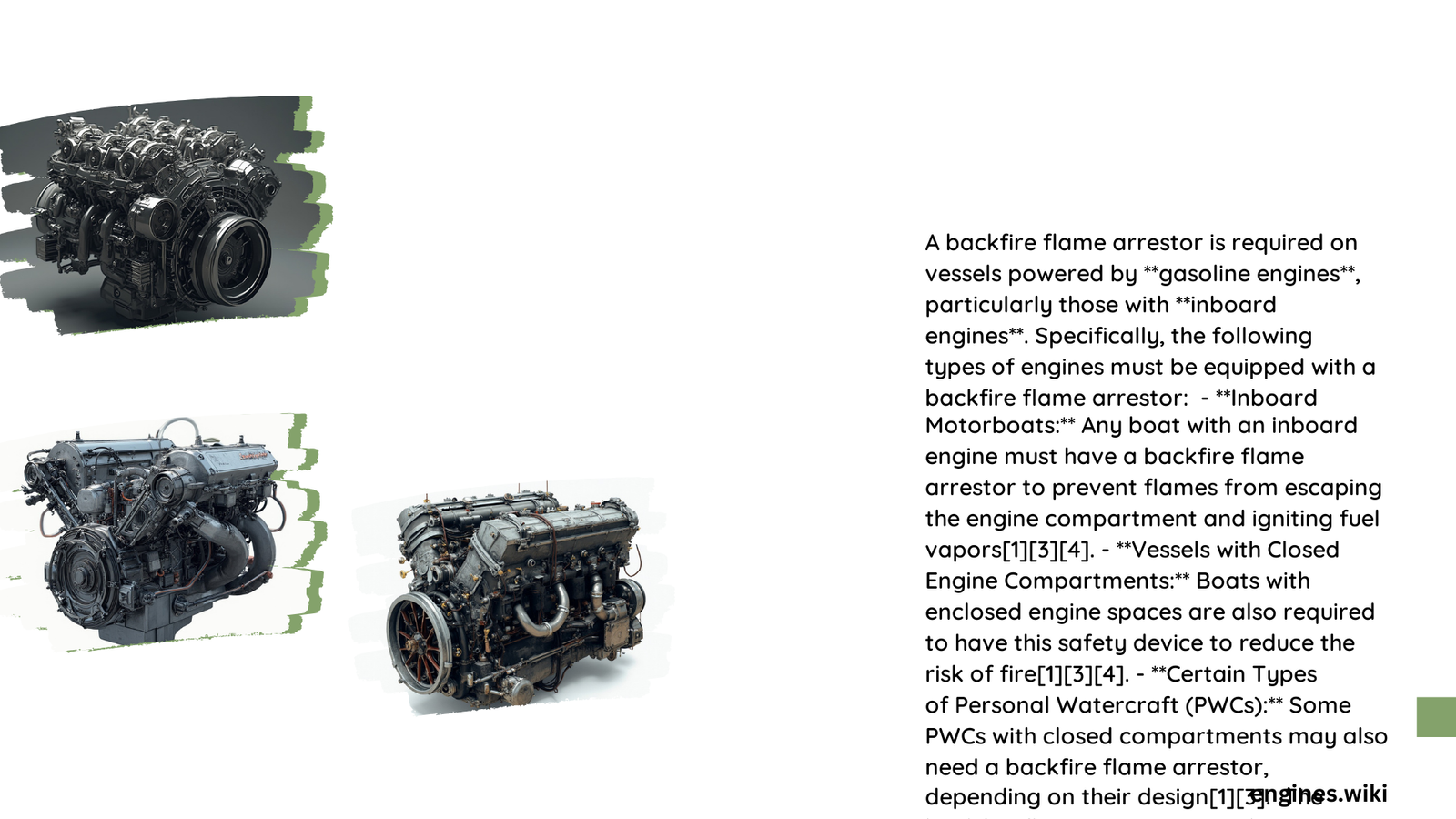Backfire flame arrestors are critical safety devices designed to prevent catastrophic engine compartment fires in marine vessels. These specialized components intercept and extinguish potential flame propagation from carburetor backfires, protecting boats and their occupants from dangerous combustion scenarios. Understanding which specific engine types mandate these safety devices is crucial for maritime compliance and operational safety.
What Engines Mandate Backfire Flame Arrestors?
Inboard Gasoline Engines: Primary Requirement
Inboard gasoline engines represent the most critical category requiring mandatory backfire flame arrestor installation. These engines, typically found in powerboats, demand precise safety protocols to mitigate potential fire risks.
Key Characteristics
- Mandatory Installation: All gasoline-powered inboard engines
- Exclusion: Outboard motor configurations
- Compliance Standards:
- U.S. Coast Guard approval
- SAE J-1928 certification
- UL 1111 standards
Closed Engine Compartment Specifications
Vessels with enclosed engine spaces, including certain personal watercraft (PWCs), also necessitate specialized flame arrestor configurations.
Installation Requirements
- Flame-tight carburetor connections
- Metal mesh or equivalent flame suppression material
- Secure attachment mechanisms
Technical Specifications for Flame Arrestors

Design Considerations
| Component | Specification | Purpose |
|---|---|---|
| Material | Corrosion-resistant metal | Durability |
| Mesh Structure | Fine metallic weave | Flame suppression |
| Connection Type | Airtight seal | Prevent vapor leakage |
Performance Expectations
Effective backfire flame arrestors must:
– Absorb potential combustion flames
– Prevent external ignition
– Withstand marine environment conditions
– Maintain structural integrity under thermal stress
Maintenance and Inspection Protocol
Regular Evaluation Checklist
- Monthly visual inspection
- Clean with mild detergent
- Check for structural damage
- Verify secure mounting
- Ensure no corrosion or degradation
Safety Implications
Risk Mitigation Strategies
- Proactive device replacement
- Professional installation
- Adherence to manufacturer guidelines
- Comprehensive crew training
Cost and Accessibility
Investment Considerations
- Moderate pricing range
- Essential safety component
- Potential insurance premium reductions
- Long-term vessel protection
Regulatory Compliance
Legal Framework
- U.S. Coast Guard regulations
- Marine safety standards
- Mandatory equipment requirements
- Potential penalties for non-compliance
Expert Recommendations
Best Practices
- Choose USCG-approved devices
- Perform regular maintenance
- Train crew on safety protocols
- Document inspection records
- Replace aging components
Conclusion
Understanding and implementing proper backfire flame arrestor protocols is not merely a regulatory requirement but a critical safety imperative for marine vessel operators.
